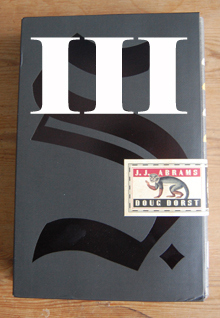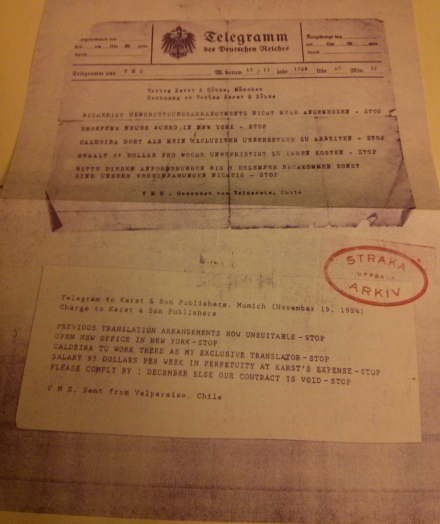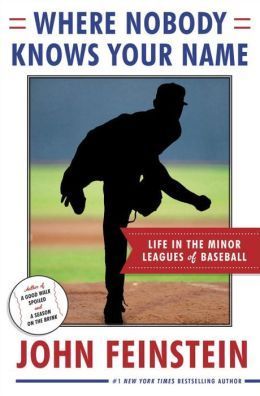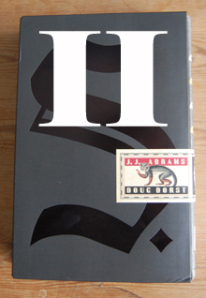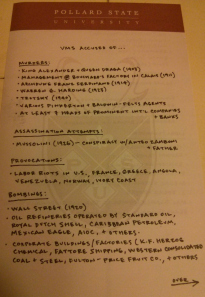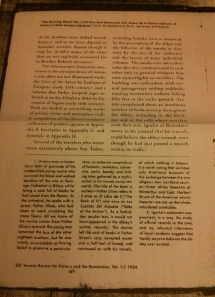Alex C. Telander's Blog, page 46
April 11, 2014
“The Martian” by Andy Weir (Crown Books, 2014)
Mars is one of those planets that no matter how many books are written about the big red planet, be they fiction or nonfiction, science fiction and astronomical readers and fans will never be satiated. But while a number of novels have been written about our red neighbor, none of them have been written quite like Andy Weir’s The Martian.
Mark Watney became one of the first people to walk on Mars, as a member of the élite Ares crew. Then a dust storm threatened the crew and their equipment and the plug was pulled and the order given to return home, which everyone did except for Mark who suffered an accident and was hit by a flying piece of metal. His vital signs no longer showed any life and the crew made the call and left Mars to return to Earth.
Except Mark didn’t die and was able to get himself into the habitat the crew had erected the short time they’d been on Mars. Then the real story of The Martian begins as Mark works out when the next Ares crew will be coming to the red planet – over four years from now – and what supplies and equipment he has to work with. As an engineer and a botanist, Mark has the skills and tools he needs, but he still has to do all the math and calculations and thinking to come up with, say, how he’s going to turn the floor of the habitat into a viable potato farm to help provide food, or use the components of the Martian rover to help him survive. And Mark is the sort of person who delights in showing you all his work, whether you understand it or not. The book kicks it into high gear when Mission Control final realize Mark is still alive and well on Mars and needs to be rescued for his sake and saving their own face in front of the people of Earth.
Andy Weir has a background in computer science, and clearly had a lot of fun putting in hard work researching and writing The Martian. Mark Watney is a fascinating character in that he is incredibly intelligent and comes up with brilliant ideas that he explains in detail to the reader. It’s as if Discover Magazine was reporting on the story of Mark Watney surviving on Mars. While it is told in first person journal entries, halfway through the book shifts its focus as a ridiculous rescue mission is conceived. Ultimately, The Martian is a book on one human’s will to survive at any cost, how he MacGyver’s himself out of every situation using intelligence and critical thinking, and is the sort of science fiction that science geeks (who are all pretty much science fiction fans anyway) absolutely love.
Originally written on March 24, 2014 ©Alex C. Telander.
To purchase a copy of The Martian from Amazon, and help support BookBanter, click HERE.


April 9, 2014
Book Report: Book Spoilers, Literary Cities, Return to Hogwarts & More
Colin Creevey Book Coming
J. K. Rowling is hard at work on a spin-off Harry Potter series focusing on Colin Creevey.
100 Greatest American Novels
Looking for a reading challenge? Check out Book Riots best 100 novels.
Remembering Tom Clancy
In memory of Tom Clancy, on opening day the Baltimore Orioles wore commemorative patches for the bestselling author.
Publishers Weekly has named San Francisco’s Green Apple Books as the bookstore of the year.
[READ MORE . . .]


April 7, 2014
2014 Writing Goals Update
We’re a quarter of the way through the year, with three months down and I thought wouldn’t this be a great time to take a look at the writing goals I set for myself at the beginning of the year and see what sort of headway I’m making. And yes, this may be one of the first times I’ve ever done a “writing goals update” during the year and perhaps the reason is because I know I’ve already made some decent headway, but the fact that I have made some headway I believe it cause for celebration. Here’s the original post with my goals. So . . .
1) A new edit/copyedit of Kyra: The First Book of Enchantus. I finished this edit/copyedit a couple of days ago, after setting myself the goal of getting a chapter done each night, I was able to get this completed in decent time. And the new version is in the process of being uploaded to the Amazon Kindle program right now. So goal number one is done!
2) Self-publish Erotica story. This is currently in process and I hope to have it ready to go by early May.
3) Edit “The Innkeeper’s Wife.” This is now next on my list.
4) Submit stories. This has been done and I recently received some delightful news that my first story had been accepted for an anthology. Though I do of course have other stories to submit which I will continue with during the year, including, hopefully, the one in item 3.
5) Write stories. And this relates with my news in the previous item as a recently wrote a story that ended up being the one that was accepted. Though I also plan to write more stories during the year.
6) Start the book. This is definitely going to be a second half or last third of the year project that won’t get started for a while yet, but one never knows, and it’s certainly something I’m looking forward to.


April 4, 2014
S. III
[This is the third installment in a series. You can read the first installment here.]
Things take an interesting turn in Chapter 2 of Ship of Theseus, as the levels of narrative being to blur a little. Our two conversing characters who have been going back and forth over the events in Ship of Theseus start to experience happenings in their own lives that relate to the author and story. We learn of these characters’ histories and their involvement with the college and what their own goals are, as well as certain tertiary villainous characters who are also very interested in this manuscript and possibly trying to thwart them in their endeavor. And now it seems inevitable in some way that these two characters will not only end up together, but are perhaps destined to. It is clear that V. M. Straka was a very popular author worldwide and is the subject of much discussion in various circles, most notably between our two main characters.
It is in this chapter that we get a good dose of notable Abrams with a strong Lost vibe as we have not only dramatic events, but events that definitely take on a supernatural vibe, in the form of a massive waterspout that appears from nowhere, imperiling the crew on the ship known as Theseus, that eventually leaves only the one main character, enigmatically known as “S,” alive and floating on the water, the ship nowhere in site.
The story becomes fuller, as new characters are introduced and learned about with the back and forth writings in the margins, some that are literary assertions and questions about the text, while others are mere conversational pieces between the two characters as their relationship begins to develop.
It is also revealed that with the various footnotes made by the translator throughout the book, many an odd comment is made that doesn’t seem to make sense according to the characters reading the text, to the extent that they deduce there is quite possibly some code at work here. The question is who is it for?
The beauty of S. is that it continues to grow more complex with its many levels plot that are each further developed in their own right, keeping the reader fully hooked into everything going on.
April 2, 2014
Book Report: Jules Verne RIP, Fifty Shades of UK, New THRONES Chapter & More!
Multiple Game of Thrones Movies
George R. R. Martin has hinted that with all the material available to be covered, Game of Thrones movies are a possibility.
Winds of Winter Chapter Released
Martin has released a new chapter to his forthcoming book.
Bookish Netflix Round Up
Looking for book-related TV and movies on Netflix? Book Riot has got you covered.
New Book Signing Record
Ryan Avery is looking to set a new record in the Guinness Book of World Records for most books signed at a single signing.


March 31, 2014
“Where Nobody Knows Your Name: Life in the Minor Leagues of Baseball” by John Feinstein (Doubleday, 2014)
It is a place and time relatively unknown, shrouded in mystery. Some players spend a couple of years there, others spend almost or equal to a decade, and certain phenoms are there for the blink of an eye and then find themselves in the Major Leagues. The Minor League system of baseball is a complex well oiled machine whose one goal is not to win games for the team, but to make its players the best they can be.
In Where Nobody Knows Your Name, bestselling author John Feinstein takes the reader on a tour of an area of baseball many know little-to-nothing about. As baseball fans, we all have our favorite players and learn of how quickly they made it through the minor leagues and got brought up to the majors to become the highly-paid skilled athletes they are today. Feinstein focuses on a number of specific minor league players, including a manager for the Tampa Bay Rays AAA minor league team, and even a minor league umpire. Some of these players are young guys drafted at a young age looking to get brought up to the big leagues real soon, only to have their hopes dashed and their confidence threatened. Others are former major leaguers still playing in the game that keep getting sent down and spending more time in the minor leagues. As for the lives of the coaches and umpires, much like the regular players, they also yearn for a chance to be brought up to the major leagues to do what they believe they do best.
Feinstein doesn’t hold back on the details, showing the low pay for players, managers and even umpires that jump to shocking amounts once they spend some time in the major leagues. There are also stories of players being sent up and down, released and picked up by teams, and yo-yoed around the country as they go from minor league team to minor league team, just wanting a chance at the Show.
The first two thirds of the book are filled with these gritty stories and fascinating details, though the reader can become a little lost at times with the sometimes long and sometimes short chapters on specific players that they may not remember or know too well from earlier chapters, and yet are just thrown into their life story again. Something that may have been easy for Feinstein to recognize may prove tricky for the average reader. The final third of the book seems to present more calls ups and send downs and releases and pick-ups that the reader has already read about, which slows the book down considerably, but ends with a satisfying epilogue that brings all the players’, managers’ and umpire’s minor league stories to a satisfying end.
Originally written on March 24, 2014 ©Alex C. Telander.
To purchase a copy of Where Nobody Knows Your Name from Amazon, and help support BookBanter, click HERE.


March 26, 2014
BOOK REPORT: Booksellers Who Blog, Audiobooks Pro or Con?, Stunning Libraries & More!
10 Literary Facebook Pages
Book Riot recommends ten literary Facebook pages you should like.
Diagon-Alley Expansion
More details have been released about the Wizarding World of Harry Potter-Diagon Alley opening this summer at Universal Studios, Florida.
World’s Most Stunning Libraries
Fodor’s Travel presents the world’s 20 most stunning libraries.
My Free Little Library
The awesomeness that is this free little library and what it means to people.
[REAM MORE . . .]


March 24, 2014
“The Corn Maiden & Other Nightmares” by Joyce Carol Oates (Mysterious Press, 2011)
The Corn Maiden and Other Nightmares is a good collection from bestselling and renowned author Joyce Carol Oates, revealing her skill, talent and ability as a horror writer. The collection features six stories, with its first, the eponymous one, serving as more of a novella to get the book started. Though in my opinion, it is the final story that really gets to the reader, leaving them feeling on edge long after the book is finished.
“The Corn Maiden” centers around a small town in New England where a young girl has had a rough upbringing with a single mother always working. Because of this, her growth and development is somewhat stunted, and she’s not altogether with it. However, she does have beautiful, lustrous, long golden hair, just like the corn maiden out of legend. Things seem hard for everyone in this town, and they’re all trying their best to get by.
Then there’s the group of four young teenage girls who have never been popular or feel appreciated by anyone; perhaps they feel abandoned and ignored, and certainly consider themselves outcasts. They like to bully and play tricks on people, be they kids or adults, they just don’t care. They follow the sound of their own drum. And now they have a new thing they’d like to try: the corn maiden ritual. And they’ve got the perfect girl to kidnap and keep in one of their basements in a mansion where she’ll never be noticed. They will prepare her for the ritual, and like all good rituals, it has to end in sacrifice.
Oates does a great job of juggling a number of characters in this novella, seeing through the kids eyes with their fast-paced quick-thoughts and illogical ways that really puts the reader in the mind of a mischievous child; but also the feeling of loss and despair when one’s own child is kidnapped and missing. It’s a powerful story that seems a somewhat obvious and simple one at first, but as the reader continues through, it becomes a lot deeper and complex.
“Beersheba” continues the important theme of the important time of childhood and the affect it can have on a person, even years later into adulthood when the past can come back to haunt you in the form of a vengeful step-daughter. “Nobody Knows My Name” explores the poignant and potent world of a young girl who now has a new sibling, a baby who is sucking all the attention and love from her life, and it’s up to her to do something about it.
Two stories in the collection feature twins. “Fossil-Figures” is about twins who are very different and each achieves fame and renown in their own way, but one is incredibly jealous of the other’s success, which will ultimately lead to his undoing. “Death-Cup” is another twin story of revenge and hate, but has a great Edgar Allan Poe feeling about it.
“Helping Hands” is the story of a middle-aged woman bringing her late husband’s clothes to a charity store and feeling something for the employee there who is a veteran; their relationship turns into something completely unpredictable. The final story, “A Hole in the Head,” is about a successful and well-off cosmetic surgeon who is cajoled into performing a strange and popular procedure, known as trepanning, which is supposed to free oneself, but going down this dark path ends up releasing the doctor’s own demons and desires.
The Corn Maiden & Other Nightmares shows Oates knows how to write great horror, getting deep into the minds of her characters, and taking the reading along. The stories are dark and moving and disturbing, while the collection as a whole is one that stays with you, even after you’ve put it back on the shelf and some time has passed.
Originally written on February 5, 2013 ©Alex C. Telander.
To purchase a copy of The Corn Maiden & Other Nightmares from Amazon, and help support BookBanter, click HERE.


March 21, 2014
S. II
[This is the second installment of a series on S., specifically on the subject of Chapter One of Ship of Theseus. The photos in this post are of the handouts in Chapter One. You can read the first part of the series here. ]
The style and conception of S. by J. J. Abrams and Doug Dorst has been compared to that of Mark Z. Danielewski’s House of Leaves and Nick Bantock’s books, such as Griffin & Sabine. While it is true that S. employs some of the styles and devices from these two author’s books, it is also very much is own unique creation. Both Danielewski and Bantock created their own books with the goal of creating an individual artwork that was different from any other, but was also particular to the story they wanted to tell.
The same can very much be said for S., which uses written text on top of the book being read, adding an additional layer of reading and story, as well as the many handouts and loose pieces of media that all add to the ambiance; the experience of the book. Abrams and Dorst did it this way not to imitate these other writers but because they wanted to tell a very specific story in a very specific way.
And the result is S., a book that is truly unique in the history of publishing.
What perhaps is the most astounding . . . actually there are many, so let’s edit that to one of the most astounding aspects of the book is not just the use of commentary between these two characters discussing the book they are reading, Ship of Theseus, but the different colors of ink that are used for the printing and even an imitation pencil font that looks very close to the real thing. It is both impressive in adding to the complexity and fascination of the story, but also in its execution as part of the impressive printing effort.
The pencil markings are in fact one of the characters’ earlier notes made when he was younger, as he has apparently been reading and been obsessed with this book since he was fifteen. As for the fonts of the characters, they are each distinctive and immediately recognizable: the male character writes in small printed block capital letters, while the female character writes in a nice, easy to read cursive. The colors of the texts will vary from page to page, chapter to chapter, and seems to serve little need other than it’s whatever color pen the characters have at the moment to use when they are writing the notes, which is exactly what the average person would do.
The creators also did a good job of creating a logical flow of the notes, so the reader can easily follow and see what the notes are in reference to in the text since, as I mentioned in the first post, the reader is essentially reading two stories at the same time. In some ways it feels like a enjoying brain exercise to read S., like doing a crossword puzzle or Sudoku, as the reader is having to follow the two separate story-lines that are related simultaneously which makes for some fun mental acrobatics.
But again, the creators do a good job of making the two stories very different so the reader doesn’t get confused. The main story with Ship of Theseus is written in an intense and at times overly-written way, almost a style of purple prose, that gives a strong voice to the story and makes it easily recognizable, to the point where at times it reminded me of a nineteenth century novel, and in particular Herman Melville’s Moby-Dick, which I have a feeling the creators might have had somewhat in mind when writing S.
Within the story of Ship of Theseus, the central character refers to his name as ”S” which the “readers” of the book who are the characters adding the margin notes assume to be V. M. Straka, the author of Ship of Theseus. But with this mysteriousness it is a journey of discovery for the main character, which helps to keep the reader hooked and involved as they follow along and learn about the character and the world.
And as for the two “readers” adding the notes in the margins on every page, while they have never met, there definitely seems to be a relationship developing between them and one might presume they will eventually end up together by the end of the reading of Ship of Theseus, but one never knows, which just adds another layer of plot and drama to S., continuing to make it an enthralling and addictive read.


March 19, 2014
Book Report: Lestat and Quiddich Return, Amtrak Wants Writers Aboard, The Rooster Calls & More

Gentlemen, Start Your Brooms
At Pottermore.com, J.K. Rowling released the first chapter in a new, 2,400-word story about the Quidditch World Cup.
Spring Break Reads
Book Riot presents some great spring break reading recommendations for you to enjoy.
Amtrak Writer-in-Residence
Amtrak is trying a new program using a writer-in-residence who must commute a long distance to work, providing up to 24 writers with a bed and cabin to write in to help creativity.






